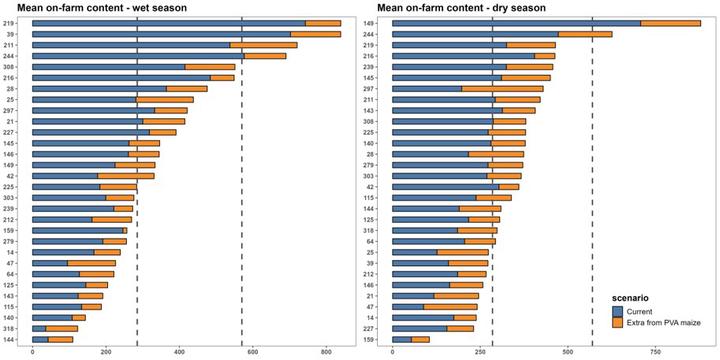Projecting the contribution of provitamin A maize biofortification and other nutrition interventions to the nutritional adequacy and cost of diets in rural Zimbabwe

Abstract
Background. Evidence of the effectiveness of biofortified maize with higher provitamin A (PVA) to address vitamin A deficiency in rural Africa remains scant. Objectives: This study projects the impact of adopting PVA maize for a diversity of households in an area typical of rural Zimbabwe and models the cost and composition of diets adequate in vitamin A. Methods. Household-level weighed food records were generated from 30 rural households during a week in April and November 2021. Weekly household intakes were calculated, as well as indicative costs of diets using data from market surveys. The impact of PVA maize adoption was modeled assuming all maize products contained observed vitamin A concentrations. The composition and cost of the least expensive indicative diets adequate in vitamin A were calculated using linear programming. Results. Very few households would reach adequate intake of vitamin A with the consumption of PVA maize. However, from a current situation of 33%, 50%–70% of households were projected to reach =< 50% of their requirements (the target of PVA), even with the modest vitamin A concentrations achieved on-farm (mean of 28.3 μg RAE per 100 g). This proportion would increase if higher concentrations recorded on-station were achieved. The estimated daily costs of current diets (mean +/- standard deviation) were USD 1.43 +/- 0.59 in the wet season and USD 0.96 +/- 0.40 in the dry season. By comparison, optimization models suggest that diets adequate in vitamin A could be achieved at daily costs of USD 0.97 and USD 0.79 in the wet and dry seasons, respectively. Conclusions. The adoption of PVA maize would bring a substantial improvement in vitamin A intake in rural Zimbabwe but should be combined with other interventions (e.g., diet diversification) to fully address vitamin A deficiency.